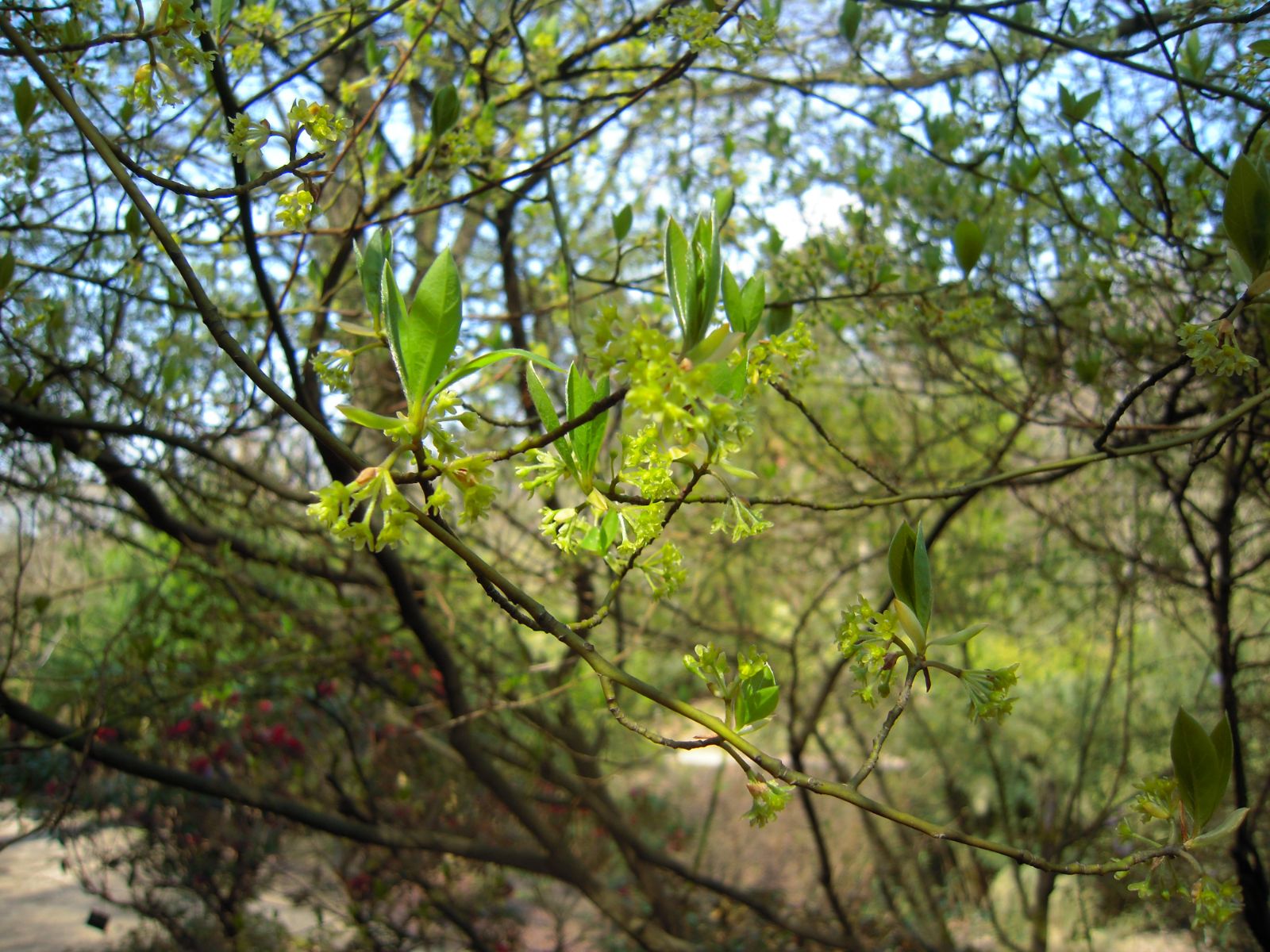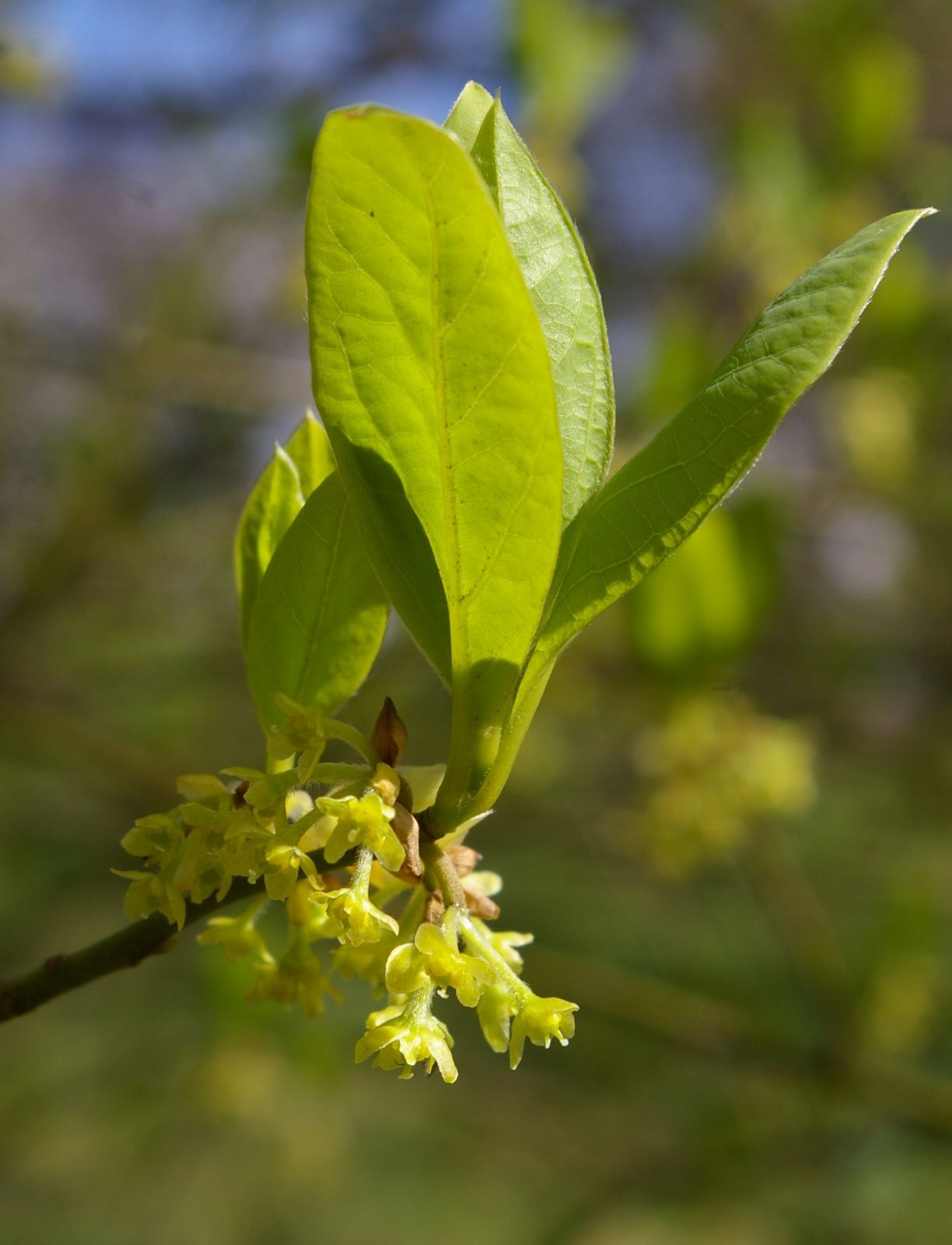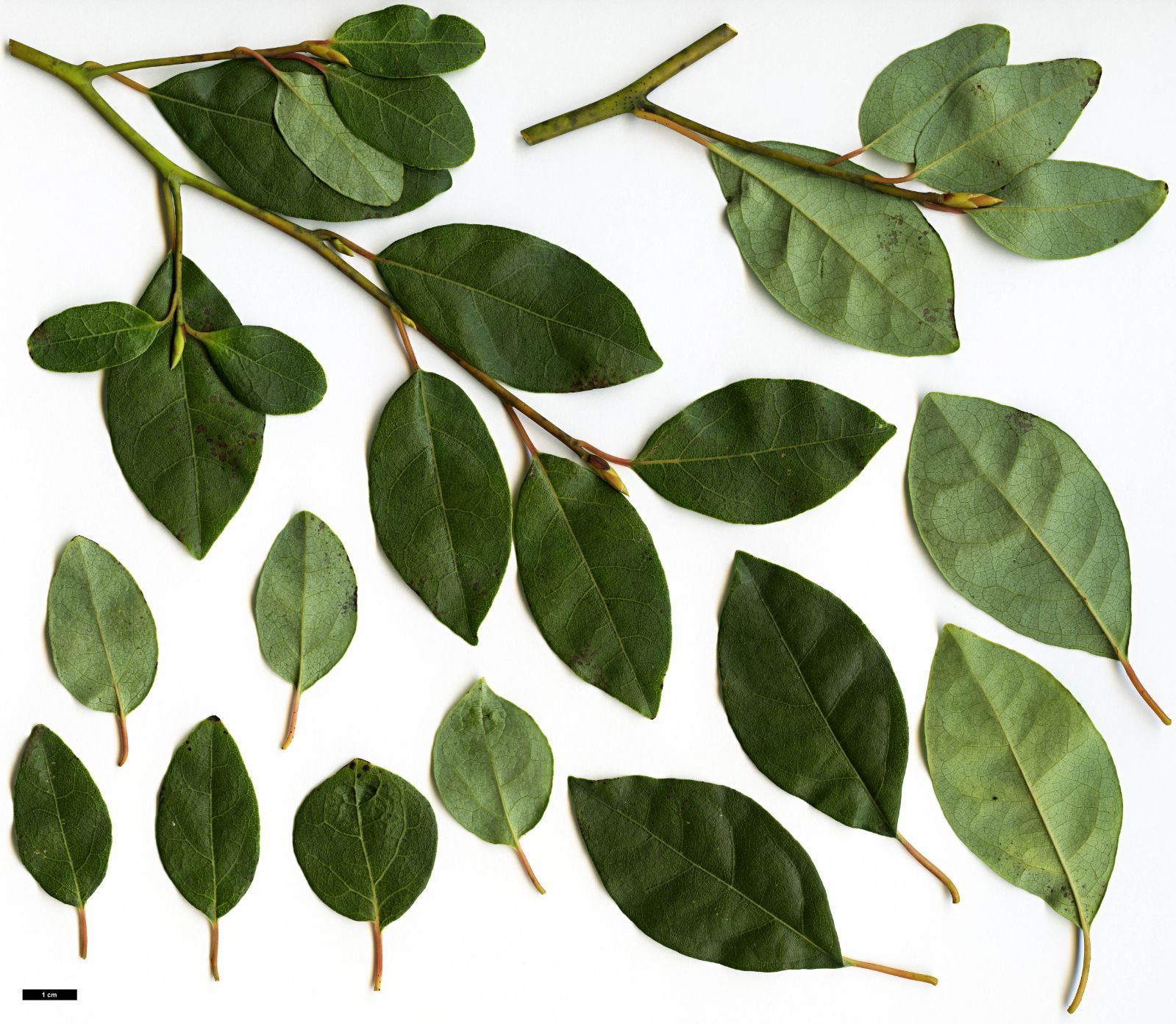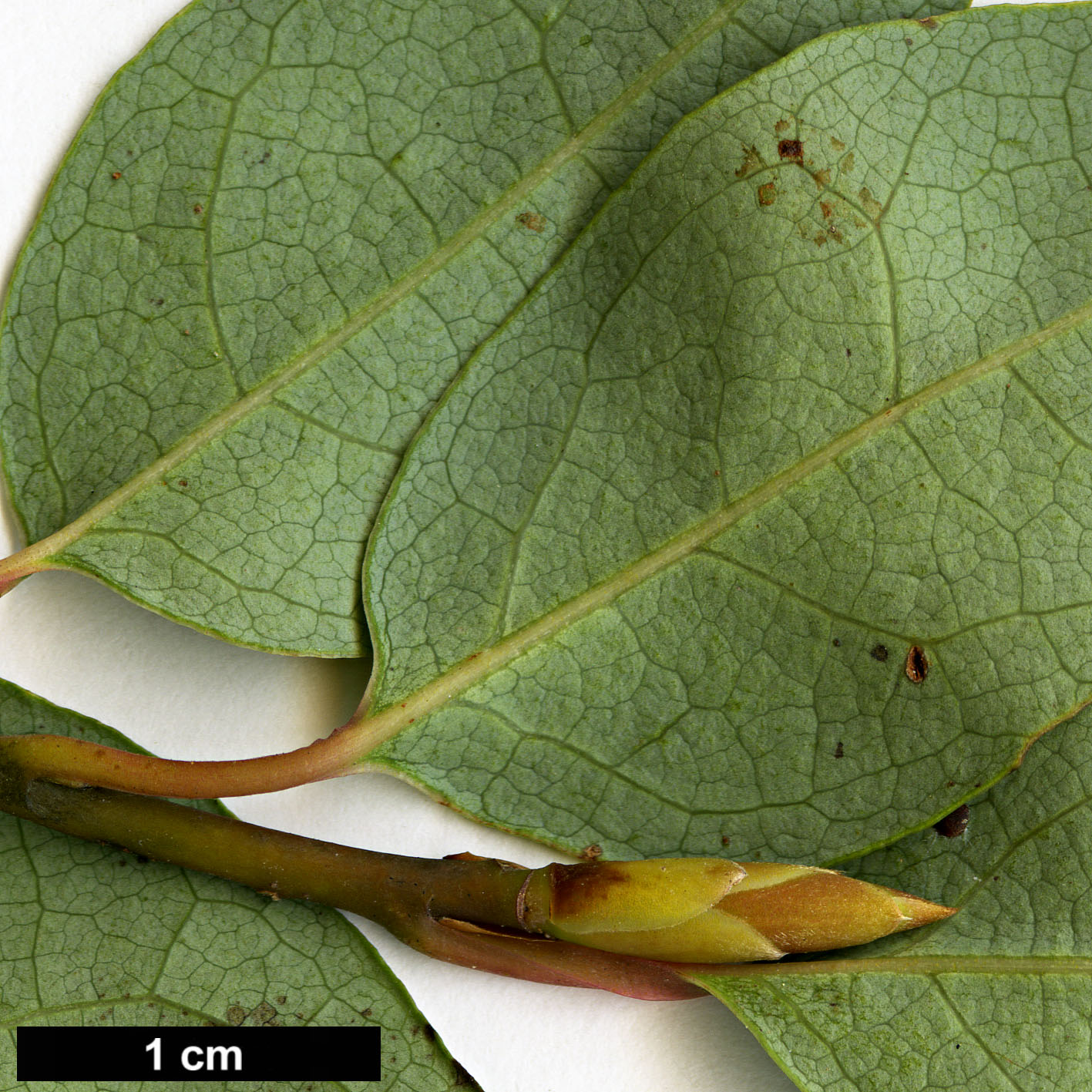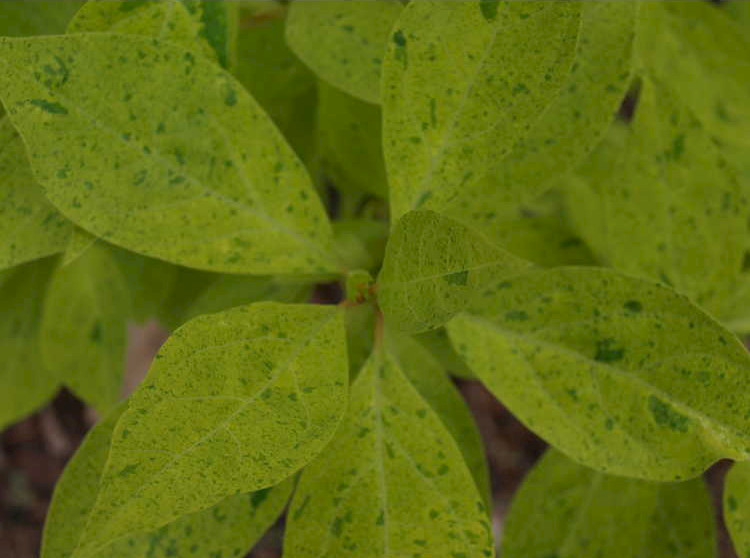Lindera umbellata
Sponsor
Kindly sponsored by
a member of the International Dendrology Society
Credits
Julian Sutton (2023)
Recommended citation
Sutton, J. (2023), 'Lindera umbellata' from the website Trees and Shrubs Online (treesandshrubsonline.
Genus
Synonyms
- Lindera hypoglauca Maxim.
Infraspecifics
Other taxa in genus
- Lindera aggregata
- Lindera akoensis
- Lindera angustifolia
- Lindera assamica
- Lindera benzoin
- Lindera chienii
- Lindera communis
- Lindera erythrocarpa
- Lindera floribunda
- Lindera fragrans
- Lindera glauca
- Lindera megaphylla
- Lindera melissifolia
- Lindera metcalfiana
- Lindera neesiana
- Lindera obtusiloba
- Lindera praecox
- Lindera pulcherrima
- Lindera reflexa
- Lindera rubronervia
- Lindera sericea
- Lindera tonkinensis
- Lindera triloba
Deciduous medium-sized shrub of erect habit. Bark smooth and reddish in young specimens. Leaves pinnately veined with 4–6 pairs of lateral veins; blade membranous, narrowly obovate to ovate, 5–9 × 1.5–3.5 cm, with whitish hairs beneath at first, and glaucescent beneath; base cuneate; margin entire; apex acute; petiole slender, 1–1.5 cm. Umbels on 0.4–0.8 cm peduncles; each umbel with about 4 involucral bracts. Flowers yellowish green, tepals 6; male flowers with 9 fertile stamens. Fruit black 0.6 cm across. (Ohwi 1965; Allen 1941).
Distribution Japan Honshu, Shikoku, Kyushu
Habitat Forest understorey.
USDA Hardiness Zone 6-9
RHS Hardiness Rating H5
Conservation status Not evaluated (NE)
From a garden standpoint, the Japanese Lindera umbellata is just one of many deciduous, shrubby, understorey linderas with tight umbels of yellow flowers, whose main attraction is yellow autumn colour and black fruit (Edwards & Marshall 2019). It tends to flower with, rather than before the new leaves. Unlike L. glauca and perhaps L. angustifolia, this is a sexual species (Nakamura et al. 2021), so both males and females are required for fruit set. Open, light shade or full sun seem to suit it.
Among the species with deciduous, pinnately veined leaves, it has often been confused with L. erythrocarpa and L. sericea. L. erythrocarpa (a better known garden plant) has a wider East Asian distribution; any Chinese-provenance material labelled L. umbellata is likely to be that species. L. erythrocarpa differs in its red fruit (cf. black in L. umbellata), rough grey bark in young specimens (cf. smooth and reddish), oblanceolate (cf. narrowly obovate to ovate) leaves with a longer, more narrowly cuneate base, and in its ability to form a single stemmed tree (Allen 1941; Ohwi 1965; Grimshaw & Bayton 2009). Molecular data cast doubt on whether the two are actually closely related (Zhao et al. 2018). L. sericea has persistent hairs on both leaf surfaces, while even in the hairier forms of L. umbellata they are lost with age; L. sericea also differs in its shorter petioles (no longer than 1 cm cf. 1–1.5 cm) and prominently raised small veins beneath (Allen 1941; Ohwi 1965).
Several varieties have been described over the years (see Allen 1941), but only the larger-leaved var. membranacea (see below) has any current standing. Var. lancea Momijama, with persistent silky hairs on the leaf undersides, belongs in L. sericea.
It is not clear when genuine L. umbellata entered western cultivation. Early to mid-20th century records probably reflect Wilson collections from China (Bean 1981) misidentified as this Japanese endemic; they are likely to have been L. erythrocarpa. More recent introductions include J. Russell 889 (Gunma Prefecture, C Honshu, 1987; grown at the Yorkshire Arboretum, UK – Yorkshire Arboretum 2023) and BCJMMT 53 (Honshu, 2007; grown at RBG Edinburgh and Benmore, UK – Royal Botanic Garden Edinburgh 2023, and Polly Hill Arboretum, USA – Polly Hill Arboretum 2023). Crûg Farm’s BSWJ 10885 from the extreme north of Honshu, 2005, is a rare example of a wild collection which has had a commercial distribution. Seed exchanges from Japanese and Korean botanic gardens have also been significant.
Outside Britain, L. umbellata is recorded at Ghent University Botanical Garden and Meise Botanic Garden, Belgium (Plantcol 2023). In North America wild- and garden-origin plants are recorded in several East Coast collections, while wild-origin material is grown at UBC Botanical Garden, Vancouver (Arnold Arboretum 2023; US National Arboretum 2023; JC Raulston Arboretum 2023; University of British Columbia 2023).
'Togarashi'
Leaves yellow, speckled green; a very bright foliage plant (Weathington 2013). Origin unknown but grown at the JC Raulston Arboretum, NC before 2013. It has had a small distribution so far, on both sides of the Atlantic. In online images it appears to be a male (JC Raulston Arboretum 2023). Tōgarashi (唐辛子) is a Japanese word for chilli peppers, while shichimi tōgarashi is a spice mix sprinkled over food (Wikipedia 2023), perhaps suggesting the name.
var. membranacea (Maxim.) Momiyama
Leaves larger, 6–12 × 3–5 cm, with 5–8 pairs of lateral veins (Ohwi 1965).
Distribution
- Japan – Hokkaido, N Honshu
Several introductions to gardens have been identified as this larger-leaved northern variant. Examples include Spongberg & Weaver 183 & 215 (Aomori Prefecture, N Honshu, 1977), SADO 24 (grown at Kew, planted 2007 and reaching 4 m in height by 2022 – The Tree Register 2023), and BCJMMT 126 (Honshu, 2007; grown at RBG Edinburgh, UK – Royal Botanic Garden Edinburgh 2023).



